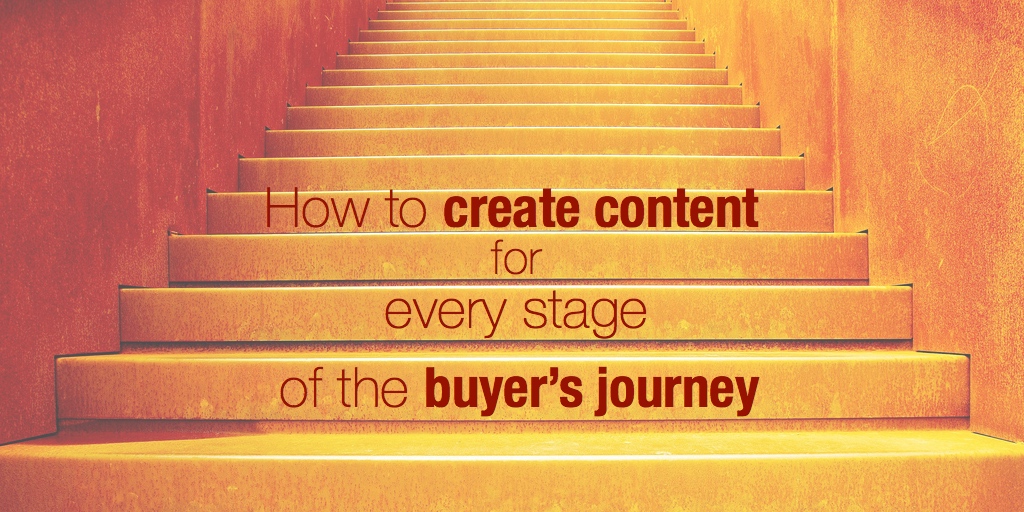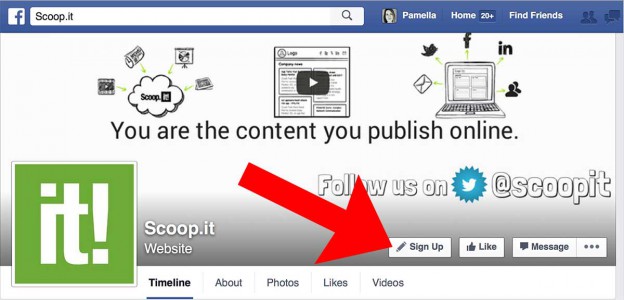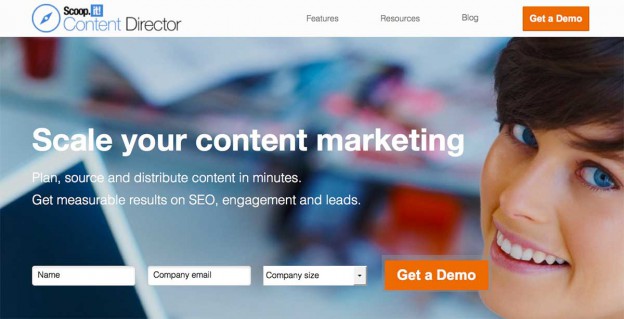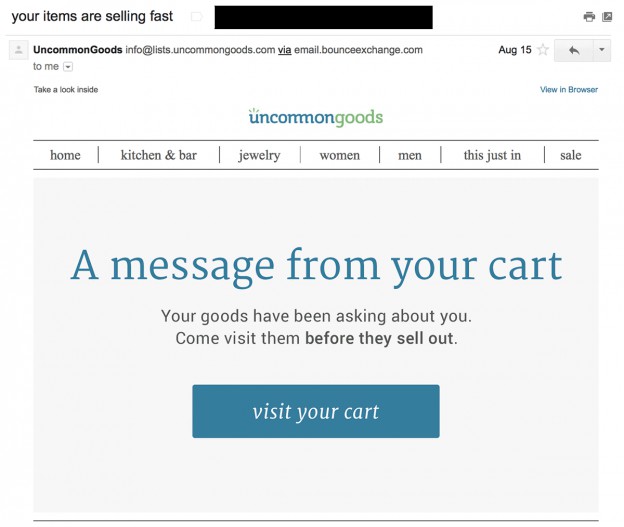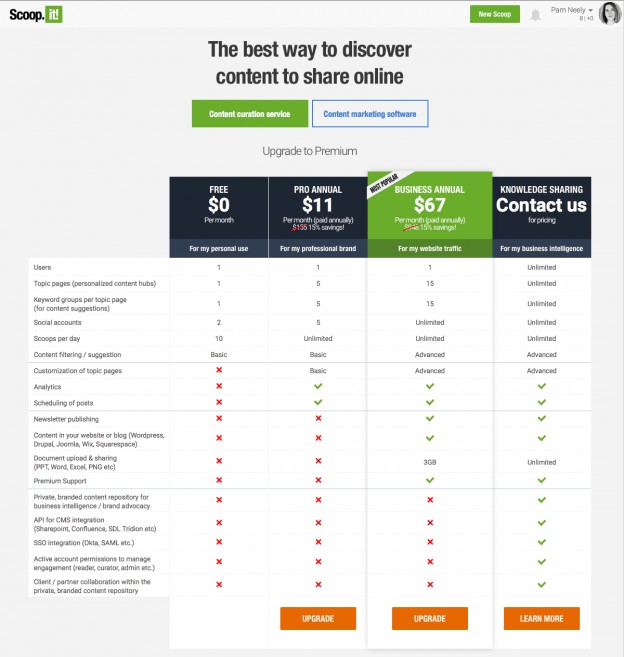Imagine: You spend a year building a relationship with a high-value client. On the day you’re set to close on a huge deal, you walk into the conference room… and start explaining what your company does.
They look at you like you’ve got two heads.
In real life, no one in his or her right mind would do this. By the day of the close, the client doesn’t need you to explain what you do. They don’t want a beginner’s tutorial on how your product works.
And yet, that’s what many of us do with our content marketing. We send introductory messages and beginner’s content to people who are way far down the sales funnel. This dilutes engagement. It trains our prospects to ignore our messages. It suggests they might not be important as we tell them that they are. After all, if they’re so important, why are we just blasting emails at them? Where’s the content for them?
You’ve probably considered making content for these people. But sometimes it feels like customizing content for each individual buyer at each stage of the sales funnel would be way too hard. And way too much work.
Fortunately, it’s not. You just have to think like a minimalist.
If you’ve got five different personas and ten steps in your sales funnel, sure enough, you’re going to have a heck of a time creating content for all those personas and steps. You’re looking at making 50 different pieces of content. That’s a nightmare. No wonder you’re holding back on this!
How to create content for every stage of the buyer’s journey
So simplify. First, figure out which persona generates the most revenue for your company. In other words: Who’s the big kahuna in your persona lineup?
Next, take the most valuable persona and think about their buyer’s journey (also known as your “sales funnel” or “sales cycle”). Not sure what that is? It’s basically the steps customers go through from never hearing about you to becoming a repeat, high-value accounts.
Every persona for every business has a slightly different buyer’s journey – if you get detailed enough. But what we’re really looking for is the critical steps that your high-value people go through to become prized customers.
Maybe it looks like this:
1. Sees your content on social media.
2. Decides to follow you on social media.
3. Decides to sign up for your email list to get some extra-special content, or maybe for a webinar.
4. Opens and clicks one of your emails.
5. Starts visiting your site on a regular basis.
6. Tries out a free interactive tool on your site.
7. Puts something in their shopping cart (or fills out a contact form if you’re in B2B).
8. Places an order (or buys one of your introductory service plans).
That’s a lot of steps. Making content for all those steps is a lot of work. But remember, these are your high-value peeps. And you aren’t making this content for just one person. And you don’t even have to make all the content for each of those steps. There are several places where you can include curated content.
Here’s what that some sample content for each of these steps might look like:
1. Sees your content on social media.
Let’s say you post about 80% curated content and 20% of your own content. You use ScoopIt!, so there’s a call to action to come back to your site on every piece of content you share. Also, you add insights to the content you share, so anyone who sees your content realizes it’s not just an automated feed.
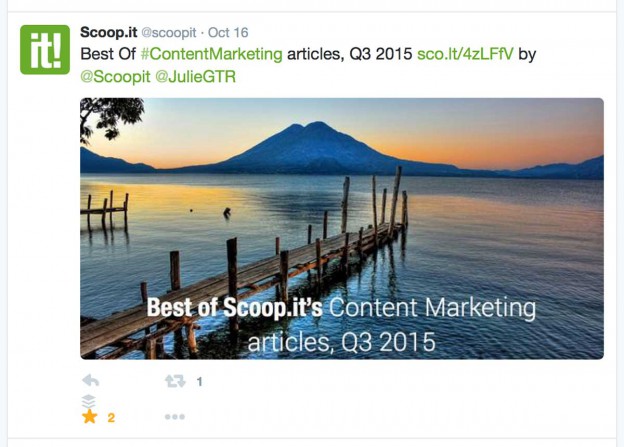
This tweet is an example of what someone who’s never heard of Scoop.It might see if they searched under #contentmarketing. This particular piece of content is a roundup-type post, so it’s mostly curated content.
2. Decides to follow you on social media.
Continues to see your curated and in-house content. Which all include calls to action to sign up for your email list.
3. Decides to opt-in to get some special content, or maybe for a webinar.
In the webinar example, say you’ve invited a well-known influencer to do the webinar. So, in a sense, you’re sharing someone else’s content with your audience. Of course, you’re also getting your brand in front of the influencer’s audience, too. Smart.
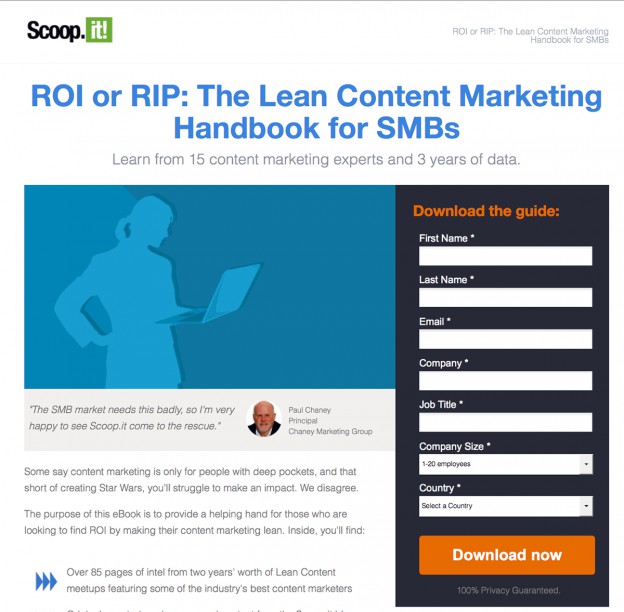
Original research and comprehensive ebooks are one of the best ways to build your email subscriber list.
4. Opens and clicks one of your emails.
Your emails can also include curated content. They could have up to 100% curated content, but you opt for about 30% curated content.
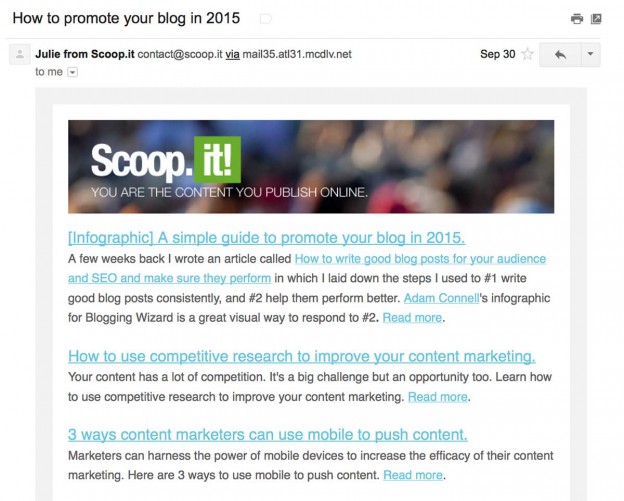
Useful, interesting, well-timed emails are one of the best ways to build a relationship with your prospective customers.
5. Starts visiting your site or your blog on a regular basis.
They start finding all the cool content on your site. Maybe that’s white papers, case studies, or recorded webinars. Maybe it’s information on your blog. Again, you can have curated content there, too. Content Director is capable of posting automatically to your blog based on what you curate from the web.
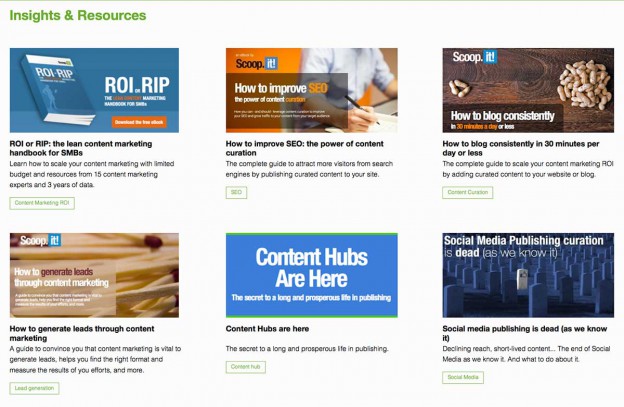
Content Director’s content resources page has over a dozen ebooks and studies that give website visitors a deep dive into the topic of their choice.
6. Tries out a free tool or a demo on your site.
Integrated content is a great way to move your prospect towards an order. Quizzes are especially excellent. They’re entertaining and educational for the website visitor, and they give you a lot of information about what your prospects know and want.
Demos are another example of content that clearly moves people closer to a sale. Here’s our demo request page:
7. Puts something in their shopping cart (or fills out a contact form if you’re in B2B).
You’ve got cart abandonment software set up (probably through your email service provider). You know this person’s email history with you. So you send them an email about the item they left behind – and a link to a related article about how to use that piece
8. Becomes a customer.
Whoo-hoo! To stay on your roll of marketing awesomeness, you send them a thank you for their order. And all your transactional emails are optimized to be engaging but not pushy. Perhaps you even include a link to your newest blog post.
So that’s what it all might look like. Of course, every business if going to be different. Who knows – maybe you get your most valuable buyers at events. Then you’ll have a different buyer journey and a different set of content to create.
In a nutshell
While it’s tempting to dive in and make tons of content for every persona and every stage of the sales cycle, don’t. You’ll drown in content projects. Instead, focus on your highest value personas first. Get those working, and then apply your learnings (and possibly some of your already-created content) to the lower-value personas.
As you may know already, we heartily encourage you to create a content hub. This can be a great way to guide people through the buying cycle. It’s also great for organizing all your content. You don’t want to start forgetting about the content you’ve already got, simply because there’s no good inventory system for it.
What do you think?
Are you consciously creating content for different phases of the sales cycle, or did it just happen organically? Do you have content for different personas? Give us some feedback in the comments.
And if you’d like to know how you can start blogging consistently in 30 minutes a day or less, read our eBook!
Image by Matthias Weinberger.

